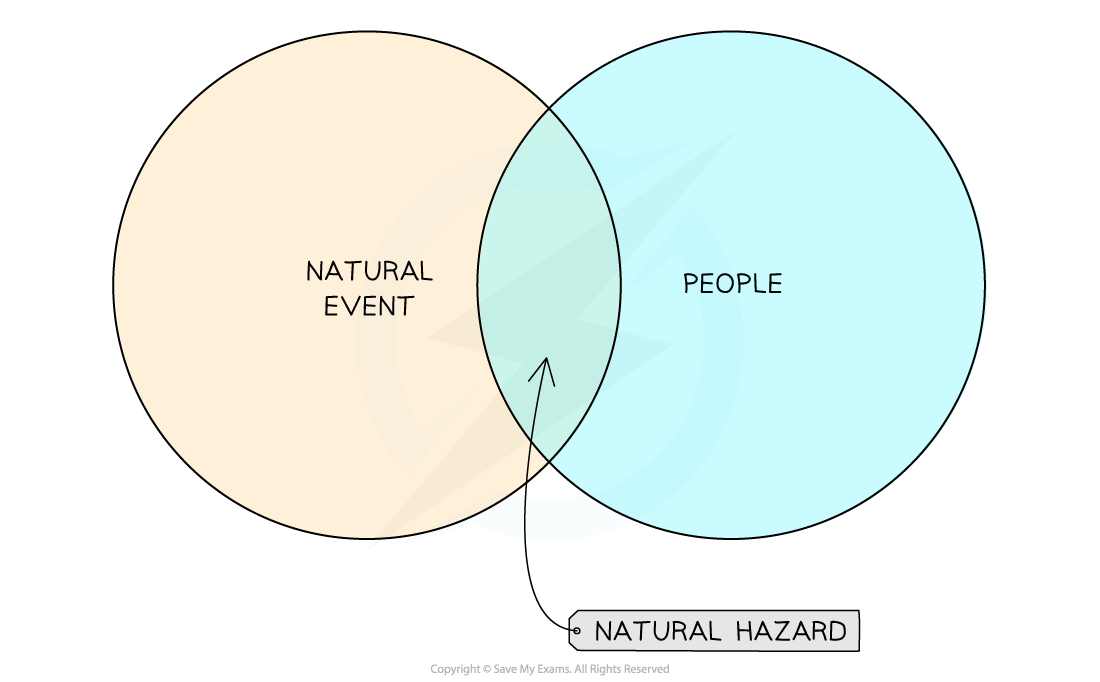Natural Hazard & Disasters
Natural hazards
- A hazard is an event which has the potential to cause harm to the environment, people or the economy
- A natural hazard is an event caused by environmental processes and would occur without the presence of humans
- The term hazard is used because of the potential impact when the natural event interacts with humans

Interaction of people and natural events
- A disaster occurs when harm actually occurs to the environment, people or the economy
- The UN defines a disaster as:
‘A serious disruption of the functioning of a community or a society involving widespread human, material, economic or environmental losses and impacts, which exceeds the ability of the affected community or society to cope using its own resources’
Exam Tip
It is important to remember that a natural hazard is a natural events that has the potential to harm people and their property. A disaster only occurs when that potential is realised so actual harm occurs.




